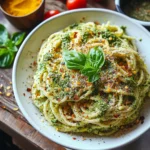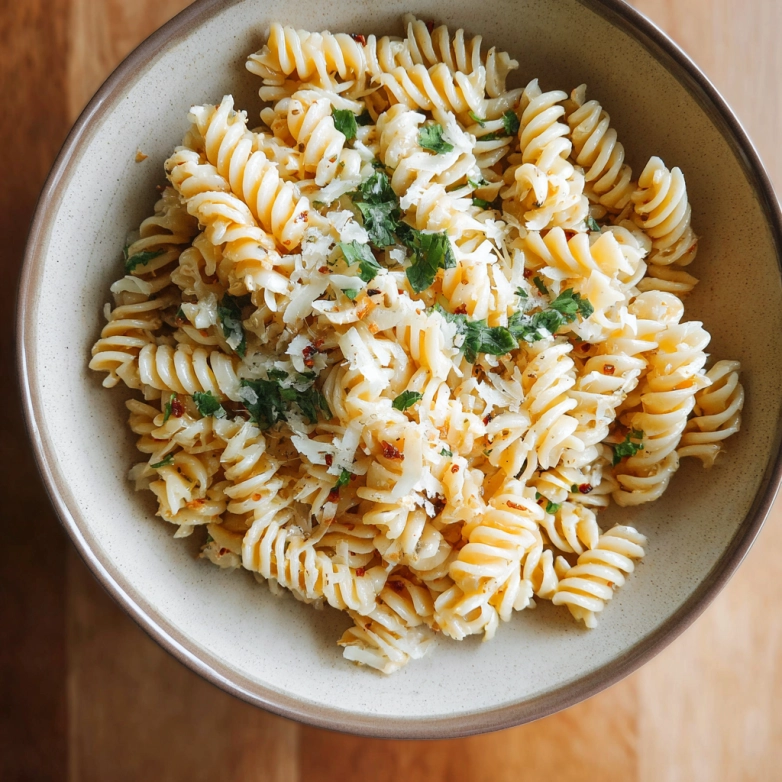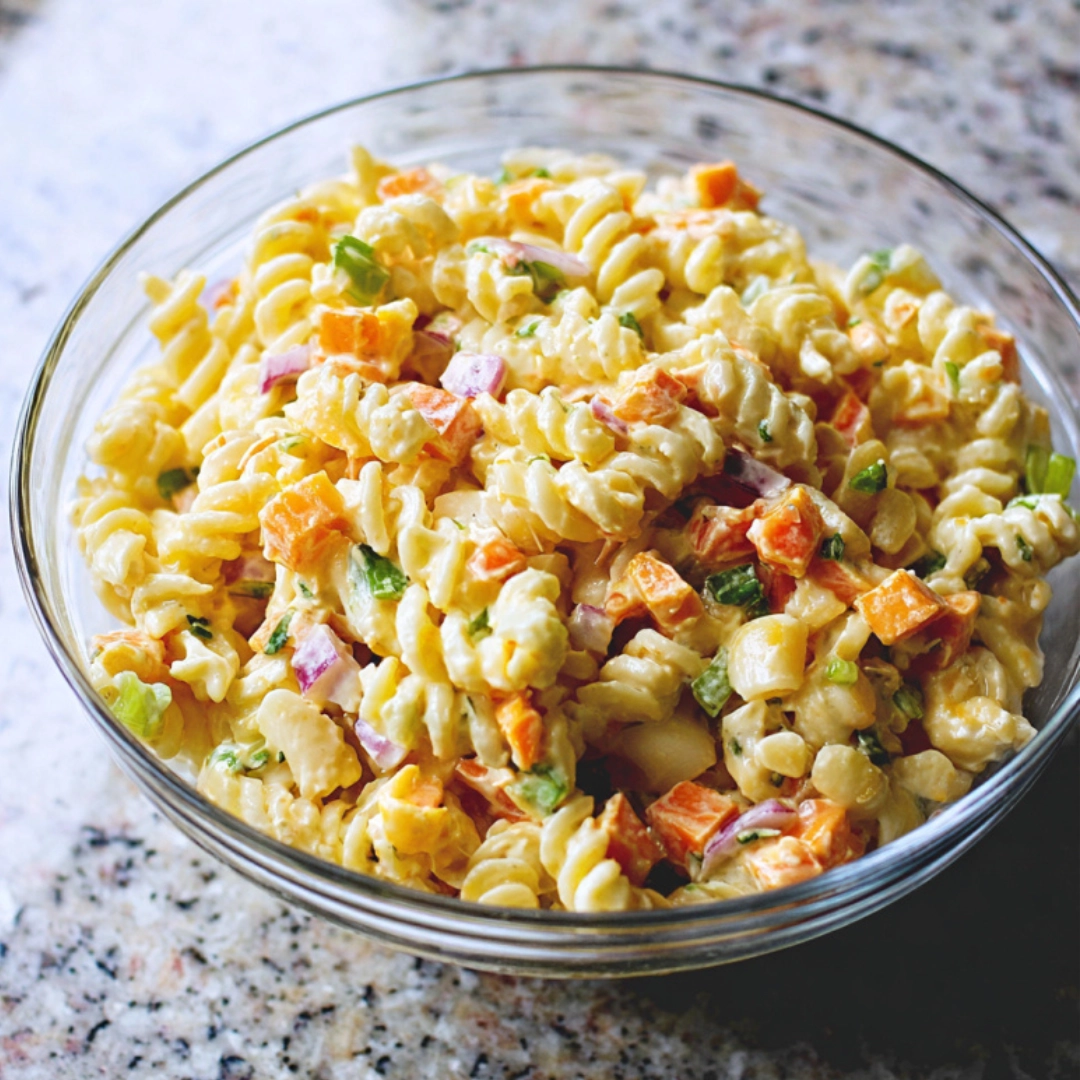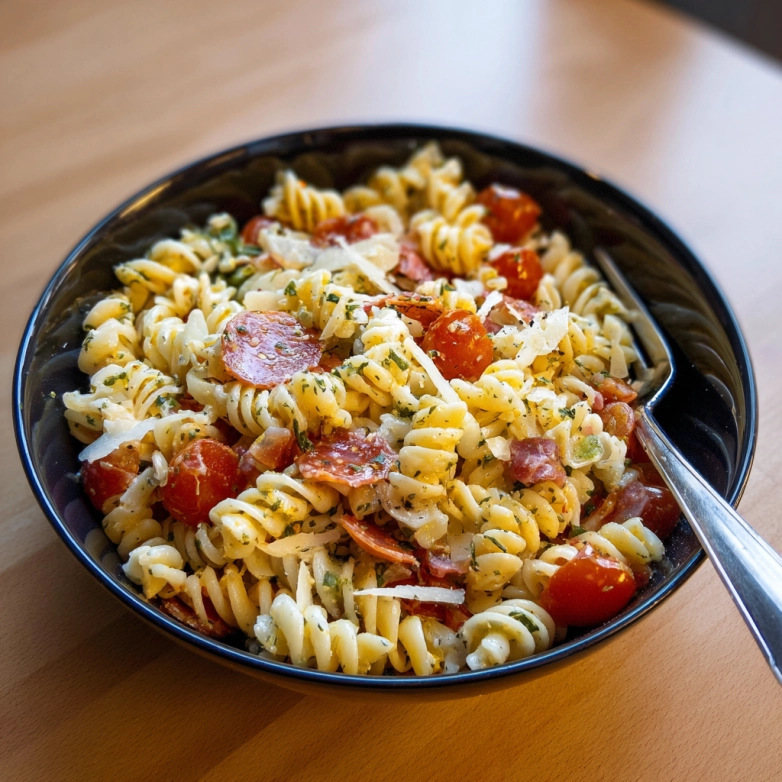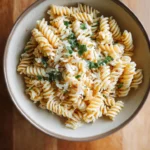Pasta al Pesto is a simple, vibrant Italian pasta dish made with fresh basil pesto and crisp garlic breadcrumbs, ready in just 30 minutes. Olivia, a passionate home chef inspired by her Italian roots, loves proving that homemade pasta can be easy and fun. In this guide, discover the best pasta to use, quick cooking tips, flavor tricks, and answers to common pesto pasta questions. Discover great ideas like Pesto Chicken Pasta if you crave more fresh flavors.
Table of Contents
What Makes Pasta al Pesto So Popular
Pasta al Pesto has won hearts around the world thanks to its straightforward preparation and bold, fresh flavors. A blend of fragrant basil, garlic, nuts, olive oil, and Parmesan comes together to create a luscious sauce that coats every strand of pasta perfectly. This dish requires no fancy technique, making it a staple for busy weeknights. Its bright green color and fragrant aroma transform plain noodles into a vibrant meal. For a twist, you might enjoy Mexican Street Corn Pasta Salad, which also pairs fresh flavors with hearty pasta.
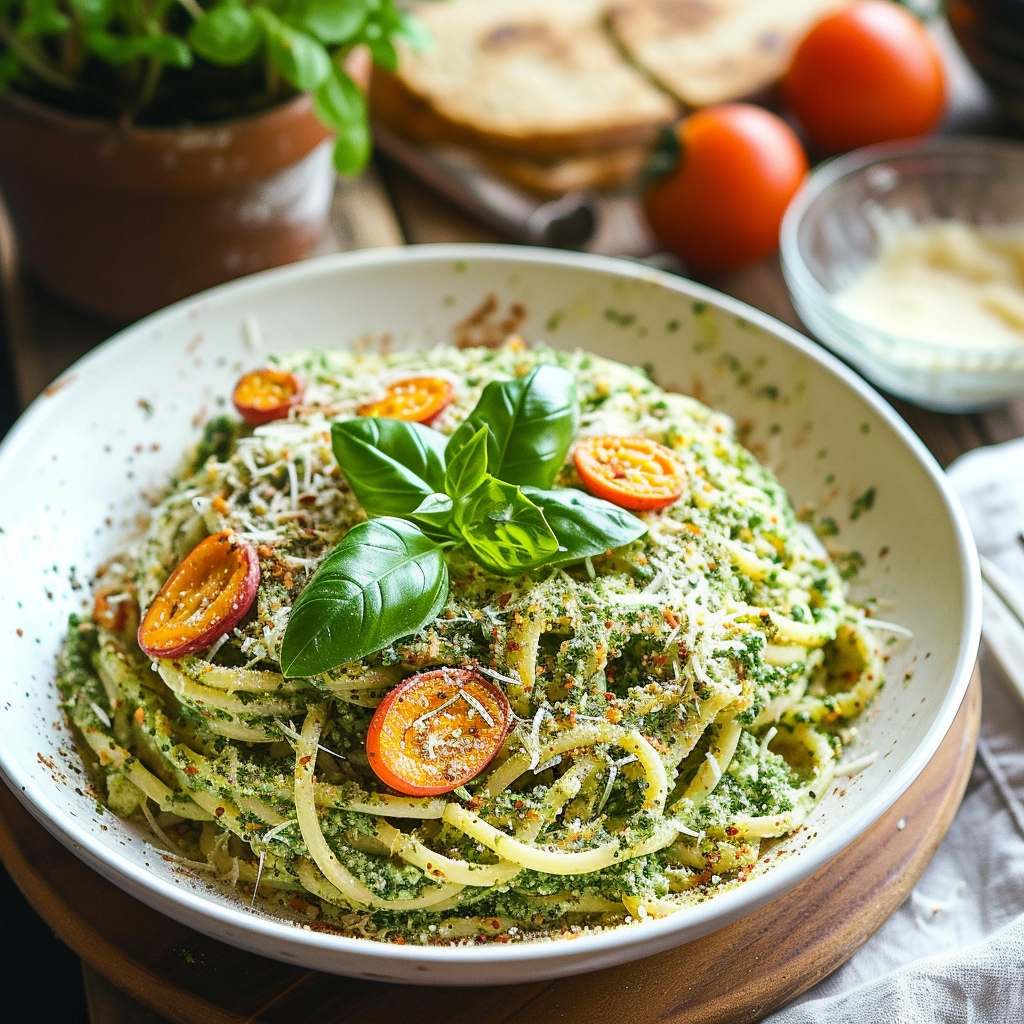
Origin and Traditional Ingredients
PrintPasta al Pesto: The Best Fresh Italian Recipe for Quick Meals
Pasta al Pesto is a quick, fresh Italian pasta dish with homemade basil pesto and garlic breadcrumbs, ready in 30 minutes for a vibrant meal.
- Prep Time: 10 mins
- Cook Time: 15 mins
- Total Time: 25 mins
- Yield: 4 servings 1x
- Category: Main Course
- Method: Stovetop
- Cuisine: Italian
Ingredients
- 10 oz linguine or spaghetti
- 2 tsp salt for pasta water
- 1 batch homemade basil pesto
- ½ cup breadcrumbs or 2 bread slices
- 1 garlic clove, grated
- ½ tsp olive oil
- ½ tsp Italian seasoning
- Pinch salt
- Optional: red pepper flakes, extra Parmesan, black pepper
Instructions
- 1. Bring a large pot of salted water to a boil. Add pasta and cook until al dente. Drain and keep warm.
- 2. Toast bread slices or use store-bought crumbs. Heat olive oil in a skillet, add grated garlic, sauté until fragrant. Stir in breadcrumbs and salt, toast until golden, then mix in Italian seasoning.
- 3. Off the heat, toss the warm pasta with homemade basil pesto until evenly coated.
- 4. Serve immediately, topped with garlic breadcrumbs, extra Parmesan, black pepper, and red pepper flakes if desired.
Notes
- Use fresh basil and quality olive oil for the brightest flavor.
- Mix pesto and pasta off the heat to preserve color and taste.
- Store leftover pesto separately in a jar topped with a thin layer of olive oil.
- Enjoy within 2 days for best freshness.
Nutrition
- Serving Size: 1 bowl
- Calories: 323
- Sugar: 3g
- Sodium: 1268mg
- Fat: 2g
- Saturated Fat: 0.5g
- Unsaturated Fat: 1g
- Trans Fat: 0g
- Carbohydrates: 63g
- Fiber: 3g
- Protein: 11g
- Cholesterol: 0mg
The roots of pesto trace back to Genoa, Italy, where families have passed down recipes for generations. Authentic Genovese pesto uses only fresh basil, garlic, pine nuts, coarse salt, Parmesan or Pecorino, and top-quality extra virgin olive oil. This simple mix, pounded by hand or pulsed in a food processor, becomes a velvety sauce that makes pasta shine. If you love trying new pasta shapes, explore Pappardelle Pasta for a hearty alternative.
Choosing the Right Pasta for Pesto
Best Pasta Shapes for Holding Pesto
Choosing the right pasta makes a big difference when making Pasta al Pesto. Traditionally, Italians love using long pasta like linguine, spaghetti, or fettuccine. These noodles wrap perfectly around the silky pesto sauce, ensuring every bite bursts with fresh basil flavor. Short pasta works well too — try penne, fusilli, or farfalle, which trap the sauce inside their curves and ridges. The key is picking pasta with enough surface area to soak up every drop of pesto. For a hearty option, check out Pappardelle Pasta — its wide ribbons hold pesto beautifully.
| Pasta Type | Best For | Notes |
|---|---|---|
| Linguine | Classic pesto pairing | Twists easily with sauce |
| Penne | Holds pesto in tubes | Great for kids |
| Fusilli | Spirals trap sauce | Works for cold pasta too |
| Pappardelle | Wide, rich bites | Pairs well with chunky pesto |
Alternatives and Gluten-Free Options
If you prefer gluten-free or low-carb pasta, plenty of options keep your Pasta al Pesto light yet satisfying. Rice pasta, chickpea pasta, or zucchini noodles bring the same bright pesto flavor without traditional wheat. Just watch cooking times since these pasta alternatives can overcook quickly. For a fun twist, learn more about Mezzaluna Pasta — a stuffed pasta that pairs nicely with a drizzle of fresh pesto instead of heavy sauces.
Trying different pasta shapes is a great way to enjoy pesto year-round. No matter which one you pick, always cook your pasta to al dente so it stays firm enough to catch the pesto evenly.
How to Make Homemade Basil Pesto
Classic Pesto Ingredients
A fresh, flavorful basil sauce is what makes Pasta al Pesto truly shine. The secret to a great bowl of pasta al pesto is using top-quality, simple ingredients that keep the taste bright and authentic. For homemade pesto, gather fresh basil leaves, garlic, pine nuts or walnuts, Parmesan cheese, olive oil, and a pinch of salt. Some cooks also add a squeeze of lemon juice for extra freshness. This quick sauce turns ordinary pasta into a classic pasta al pesto dinner that feels special yet easy.
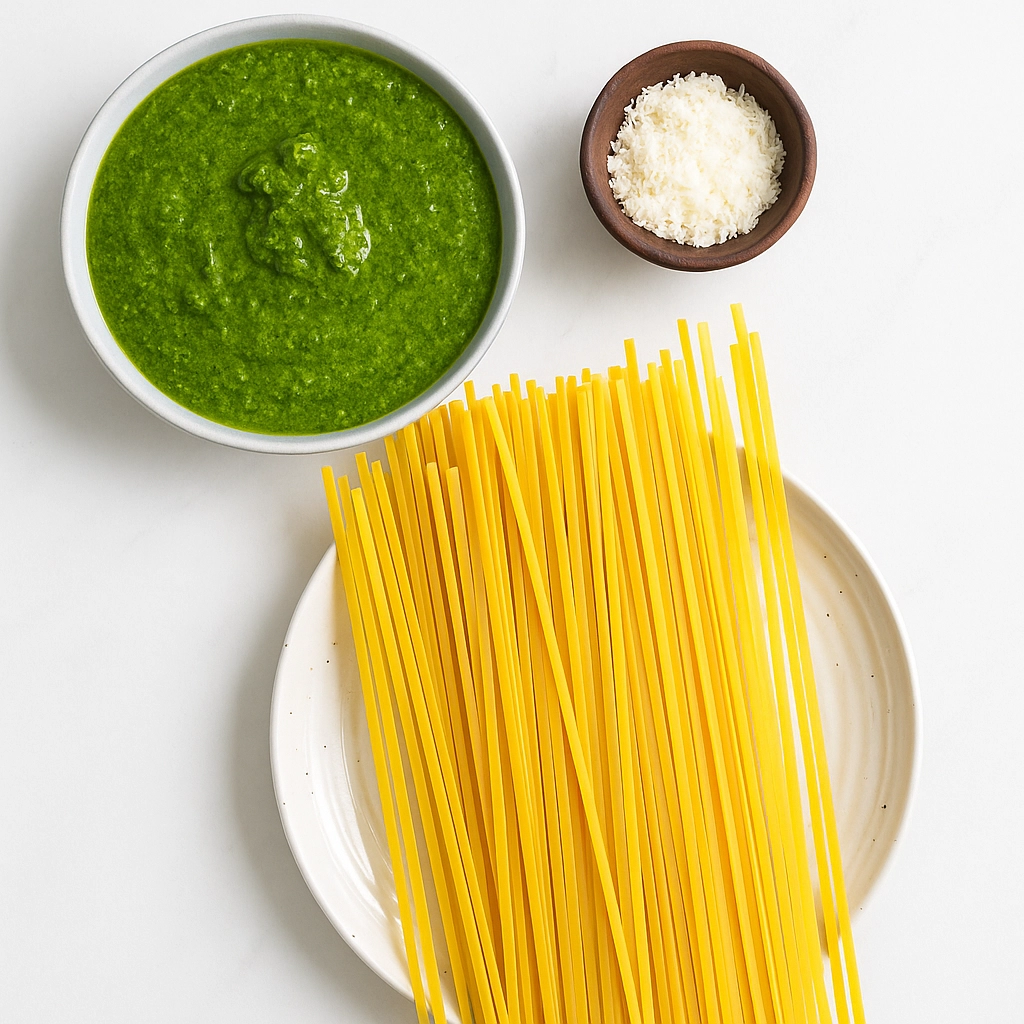
Tips for Blending Perfect Pesto
Blending pesto the right way is key to rich pasta al pesto flavor. A food processor works well but a mortar and pestle can give your basil sauce a rustic touch. Always pulse basil, garlic, and nuts first, then slowly drizzle in the olive oil until smooth. Gently stir in the grated cheese at the end. This keeps your pesto light and ready to coat pasta evenly.
Never heat your pesto directly on a hot pan. For the best pasta al pesto, cook the pasta al dente, drain, and mix with the pesto off the heat. This preserves the basil’s bright color and keeps the cheese from melting into lumps.
| Ingredient | Amount | Note |
|---|---|---|
| Fresh basil | 2 cups packed | Use leaves only |
| Garlic | 1-2 cloves | Stronger flavor if desired |
| Pine nuts | ¼ cup | Toast lightly for depth |
| Parmesan cheese | ½ cup grated | Or use Pecorino Romano |
| Olive oil | ½ cup | Choose extra virgin |
| Salt | Pinch | Lemon juice optional |
A smooth, fresh pesto transforms a basic meal into a flavorful Pasta al Pesto masterpiece. If you want more pasta ideas for pairing with this pesto, try Ditalini Pasta. Its small shape works perfectly with this basil sauce.
Cooking Pasta Perfectly Every Time
Salted Water and Timing Tips
Perfect pasta is the heart of any great Pasta al Pesto. Start by bringing a large pot of water to a rolling boil. Use plenty of water so the noodles cook evenly and don’t stick together. Add a good amount of salt, about one tablespoon per quart. Salting the water deeply seasons the pasta from the inside, giving your Pasta al Pesto the best flavor from the first bite.
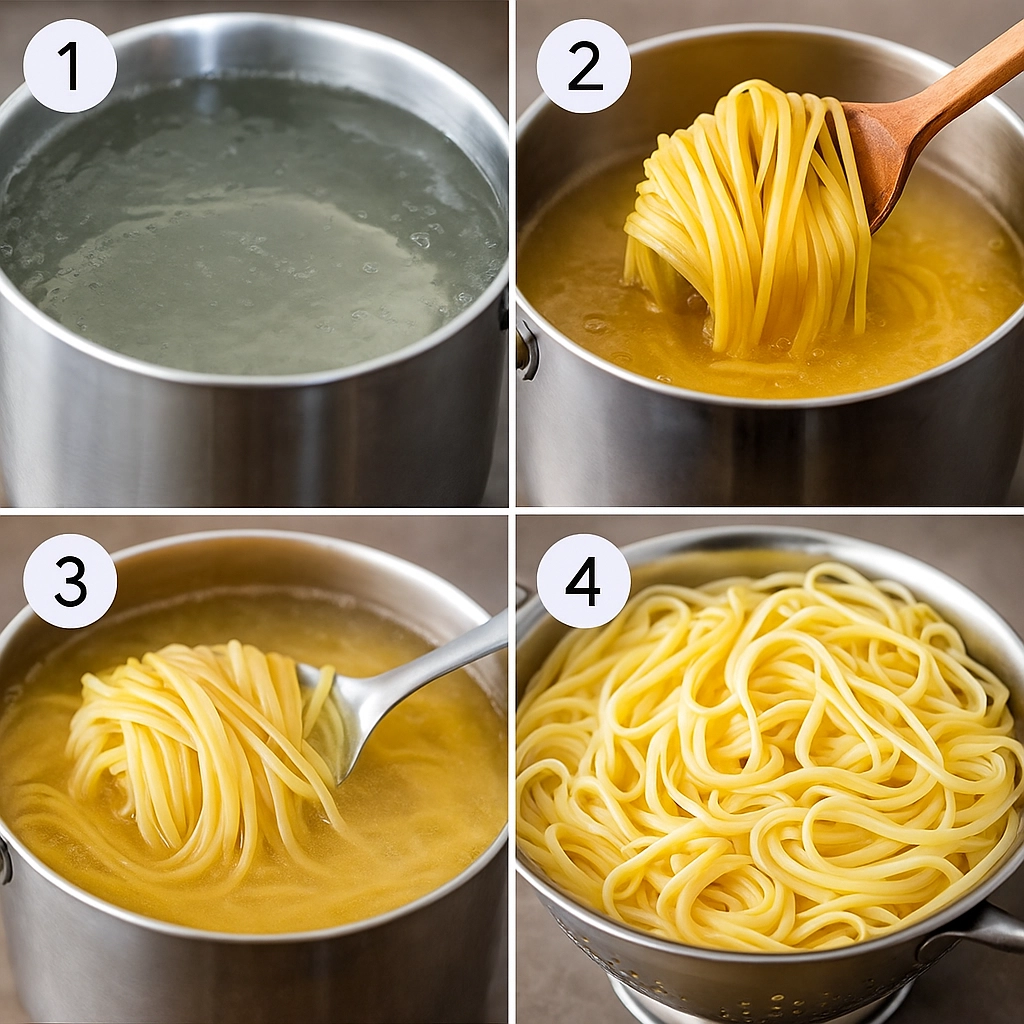
Most dry pasta cooks in 8 to 12 minutes, but always check the package and taste a piece before draining. The goal is al dente pasta — firm to the bite — so it holds the pesto without turning mushy.
If you love trying new flavors, check out Salmon Pasta Recipe for another easy dish that uses quick pasta cooking tips.
| Step | Tip |
|---|---|
| Boil plenty of water | Prevents sticking |
| Salt the water well | Adds deep flavor |
| Stir pasta once | Keeps noodles separate |
| Taste before draining | Check for al dente texture |
Draining and Mixing Techniques
Drain your pasta quickly but don’t rinse it. The bit of starchy water helps pesto cling to every noodle, making your Pasta al Pesto creamy and smooth. Reserve half a cup of pasta water before draining — you might need it to loosen the sauce later.
Return the pasta to the pot or place it in a large bowl. Off the heat, add your homemade pesto and a splash of the reserved water. Toss gently until the noodles are coated in bright green basil pesto. Taste and adjust salt and pepper as needed.
This simple method keeps your Pasta al Pesto from drying out and ensures every bite is bursting with fresh flavor. For a different pasta shape that works well with this technique, don’t miss Paccheri Pasta.
Adding Garlic Breadcrumbs for Extra Crunch
Ingredients for Garlic Breadcrumbs
A sprinkle of crunchy garlic breadcrumbs takes Pasta al Pesto from simple to outstanding. This quick topping adds texture and a rich, toasty flavor that pairs perfectly with fresh basil pesto. You only need a few pantry staples:
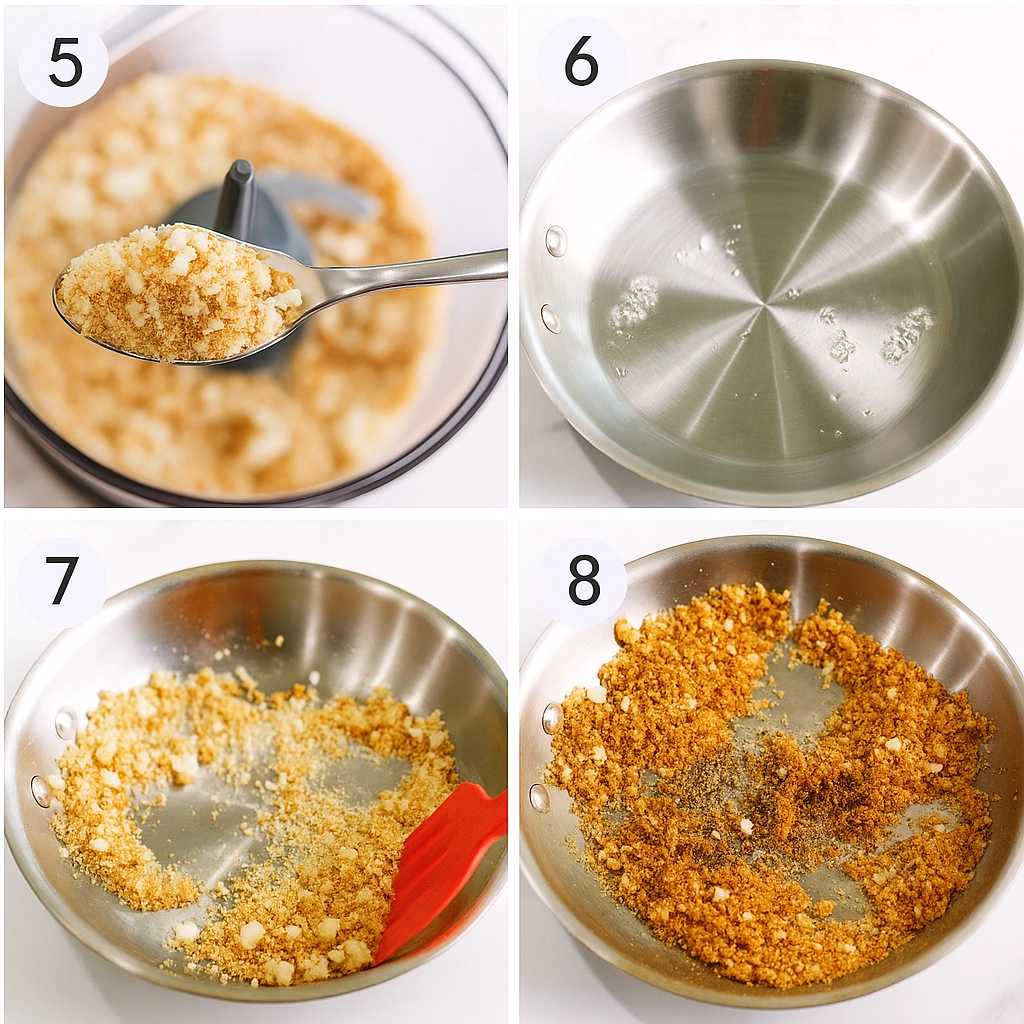
- Fresh or store-bought breadcrumbs
- Garlic cloves, finely grated
- Olive oil
- A pinch of salt
- Italian seasoning or dried herbs of your choice
These garlic breadcrumbs elevate any Pasta al Pesto dish by adding a satisfying crunch with every forkful.
| Ingredient | Amount | Tip |
|---|---|---|
| Breadcrumbs | ½ cup | Use fresh or dry |
| Garlic | 1 clove grated | Add more for bold taste |
| Olive oil | ½ teaspoon | Don’t overdo it |
| Salt | Pinch | Adjust to taste |
| Italian herbs | ½ teaspoon | Optional for extra aroma |
How to Toast and Season
Making garlic breadcrumbs is quick and easy. Start by toasting bread slices in an air fryer at 400 for about five minutes until golden and crispy. Let them cool, then pulse in a food processor until coarse. Or simply use store-bought breadcrumbs to save time.
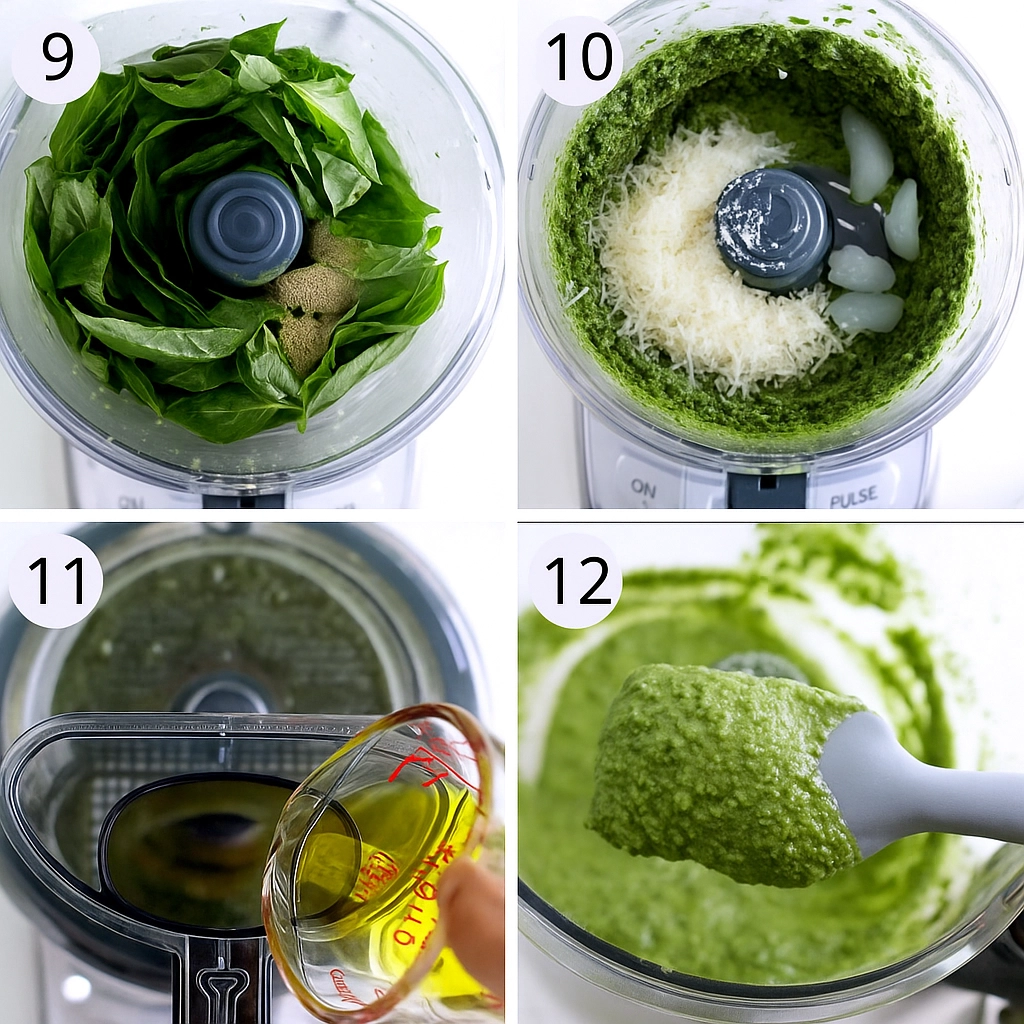
Heat olive oil in a small skillet over medium-low heat. Add the grated garlic and sauté until it smells fragrant, but not burnt. Stir in the breadcrumbs and a pinch of salt. Keep stirring until they turn golden brown and crisp up nicely. Remove from heat and mix in Italian seasoning.
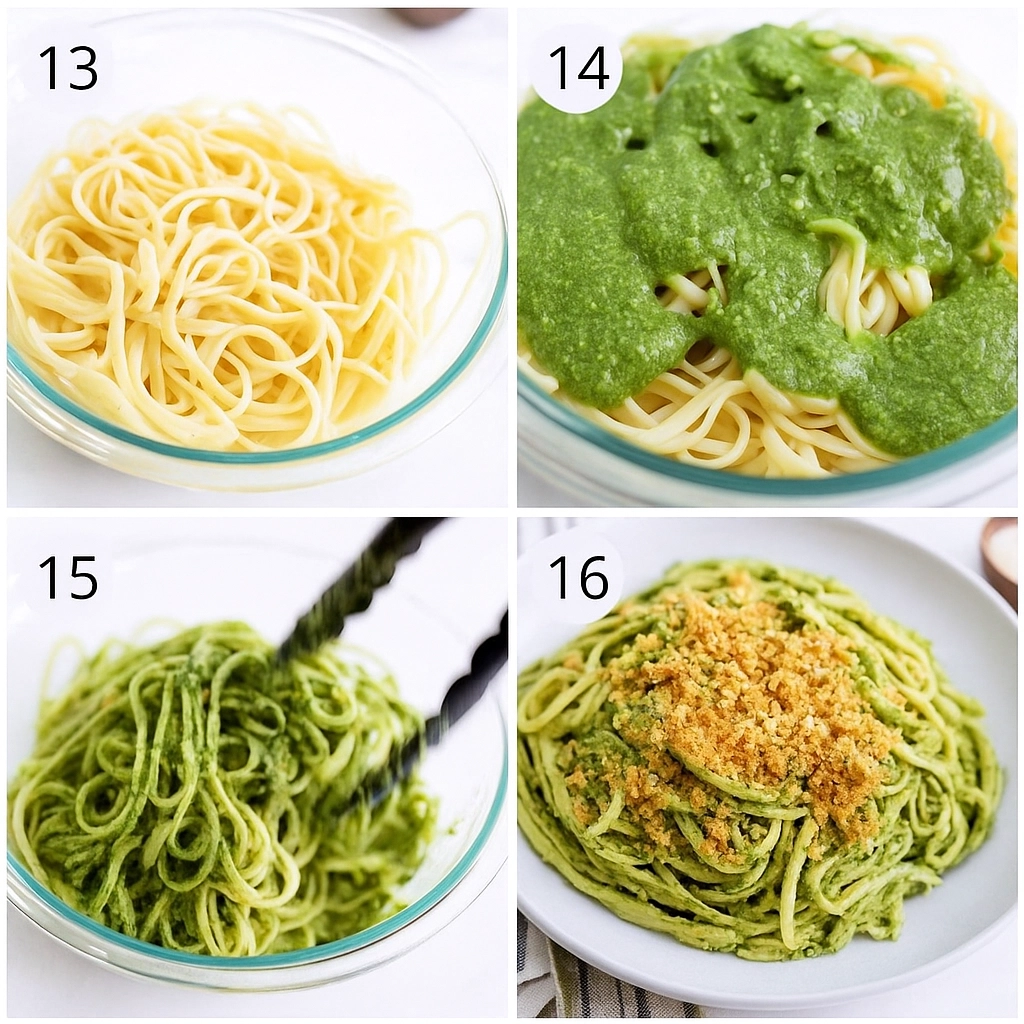
Scatter these breadcrumbs generously over your hot Pasta al Pesto just before serving. They bring a wonderful crunch and a boost of garlicky goodness. If you enjoy trying new pasta dishes with crunchy toppings, check out Grinder Pasta Salad for another tasty twist.
Serving Suggestions and Toppings
Popular Garnishes and Sides
Serving Pasta al Pesto is all about freshness and a little creativity. Once your pasta is coated in bright green pesto and topped with crunchy garlic breadcrumbs, take it up a notch with simple garnishes. A sprinkle of extra Parmesan or Pecorino cheese adds a salty bite that pairs well with the basil sauce. Freshly cracked black pepper and a pinch of red pepper flakes give gentle heat and extra depth.
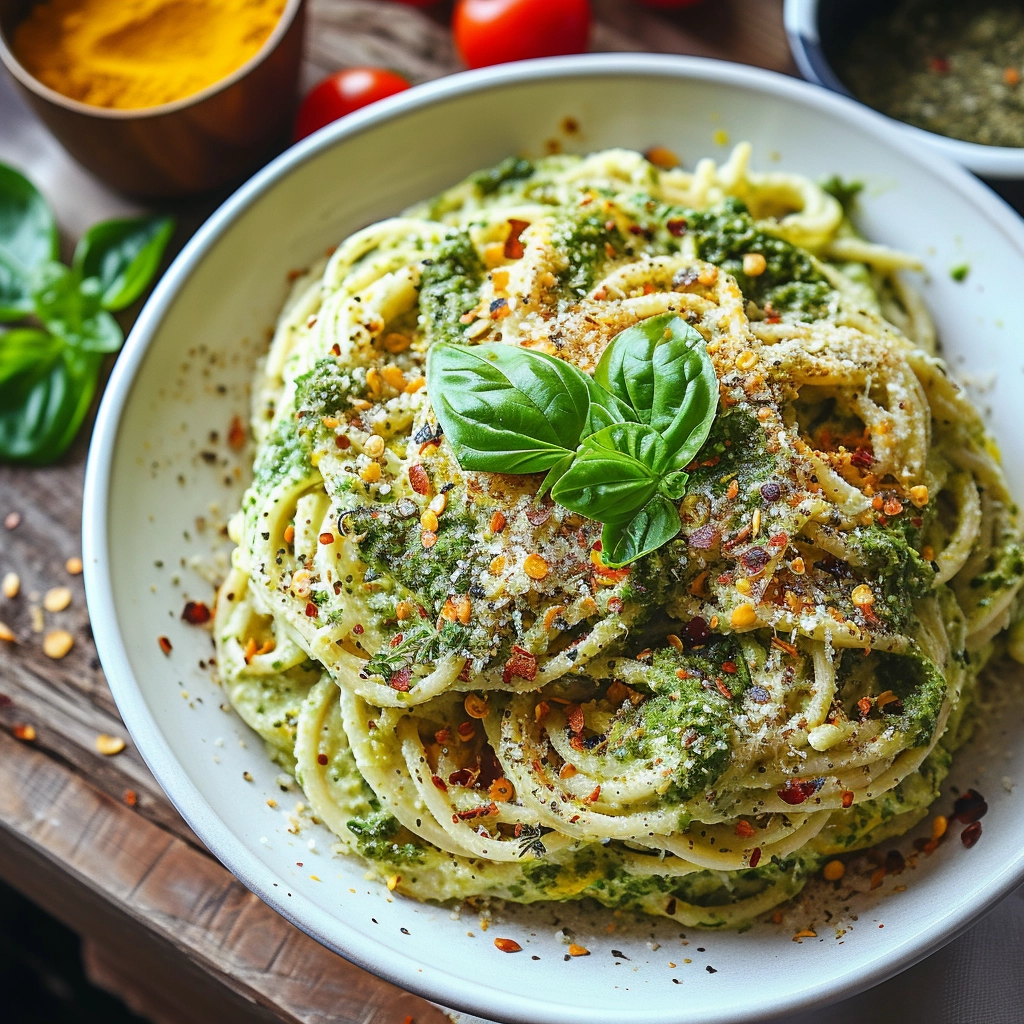
For sides, a crisp green salad or a handful of cherry tomatoes drizzled with olive oil keeps the meal light and refreshing. Warm garlic bread or focaccia makes a delicious side to soak up any leftover pesto. Some people also like adding a squeeze of fresh lemon juice to bring a burst of brightness that balances the richness of the nuts and cheese.
For more ideas on light pasta pairings, don’t miss this flavorful Lemon Artichoke Pasta Salad — it’s another fresh and zesty dish to try.
| Topping | Purpose |
|---|---|
| Extra Parmesan | Adds savory flavor |
| Red pepper flakes | Adds mild heat |
| Fresh basil leaves | Boosts color and aroma |
| Olive oil drizzle | Gives a silky finish |
| Cherry tomatoes | Brings sweetness |
How Italians Enjoy Pesto Pasta
In Italy, pesto pasta is a beloved dish, especially in Liguria, the birthplace of classic Genovese pesto. Italians typically mix the pesto with pasta off the heat to preserve its vibrant color and fresh aroma. It’s often served family-style, right from the pot, topped with fresh basil and a drizzle of good olive oil.
Many Italians love pairing Pasta al Pesto with a simple protein like grilled chicken or shrimp, but traditionalists often enjoy it on its own to let the basil shine. Serving it fresh is key since leftover pesto can darken when exposed to air.
If you want to try another hearty Italian pasta idea, discover this tasty Steak Pasta for a rich, filling alternative.
Storing and Reheating Pesto Pasta
Best Ways to Store Leftovers
Pasta al Pesto tastes best fresh, but sometimes you have leftovers. To keep that fresh basil flavor, store your cooked pesto pasta in an airtight container in the fridge. It’s best eaten within two days because pesto can lose its bright color when exposed to air for too long.
If you have extra homemade pesto, keep it separate from the pasta. Place it in a small jar, cover the top with a thin layer of olive oil, and close it tightly. This trick helps keep the basil sauce from turning dark too soon. Use leftover pesto within three to four days for the freshest taste.
For more easy pasta ideas that store well, check out this delicious Shrimp Mushroom Pasta.
| Storage Tip | How-To |
|---|---|
| Airtight container | Keeps moisture and air out |
| Layer of olive oil | Prevents pesto from browning |
| Store in fridge | Keeps pasta safe for up to 2 days |
| Keep sauce separate | Helps maintain freshness |
How to Refresh Pesto Flavor
To reheat Pasta al Pesto, avoid using the microwave directly. Instead, warm it gently in a skillet over low heat. Add a splash of water or a drizzle of olive oil to loosen the pasta and revive the pesto’s creamy texture. Stir slowly until it’s warm but not too hot — overheating can dull the basil’s taste.
If the pesto seems bland after chilling, add a squeeze of lemon juice or a sprinkle of fresh Parmesan to brighten up the flavors again. These small touches bring leftover Pasta al Pesto back to life without needing extra sauce.
For a unique, light pasta dish you might enjoy fresh or as leftovers, see this No Carb Pasta recipe too.
Conclusion
Final Thoughts on Pasta al Pesto
Pasta al Pesto is proof that simple ingredients can create a fresh, comforting meal in under 30 minutes. With homemade basil pesto, perfectly cooked pasta, and a sprinkle of garlic breadcrumbs, this dish brings a taste of Italy to your kitchen any night of the week. Remember, the secret is using fresh basil and mixing the sauce off the heat to lock in flavor and color.
Looking for inspiration? Try this flavorful Meghan Markle Pasta for another fresh twist on classic Italian comfort food.
Craving simple, flavor-packed meals? Join us on Facebook for daily comfort-food inspiration, speedy weeknight dinners, and mouthwatering recipes: Flavour Recipe on Facebook.
📌 Love pinning beautiful food ideas? Find stunning boards, meal-prep shortcuts, and all your family’s favorites on Flavour Recipe Pinterest.
Let’s whip up something delicious together!
FAQs About Pasta al Pesto
FAQs About Pasta al Pesto
Many types work well for Pasta al Pesto, but long pasta like spaghetti, linguine, or fettuccine is most traditional. Their smooth strands wrap perfectly around the basil sauce. Short pasta like penne, fusilli, or farfalle also holds the pesto nicely in curves and ridges, giving you a burst of flavor in every bite.
Can you put pesto straight into pasta?
Yes, and that’s the beauty of Pasta al Pesto. Once your pasta is cooked and drained, add the pesto off the heat. Toss it gently so the sauce coats every strand without cooking the basil or melting the cheese too much. Never cook pesto directly on the stove — this keeps the flavor fresh and the color bright.
What ingredients do you need for pesto pasta?
For classic Pasta al Pesto, you need just a few basics: fresh basil leaves, garlic, pine nuts (or walnuts), Parmesan or Pecorino cheese, extra virgin olive oil, and salt. Some people add a squeeze of lemon juice for extra brightness. You’ll also need good-quality pasta and, if you like, crunchy garlic breadcrumbs on top.
What do Italians do with pesto?
In Italy, pesto is most famous for coating pasta, but it’s also used in other simple ways. Italians spread pesto on toasted bread, stir it into soups for extra flavor, or serve it as a dip for fresh veggies. For Pasta al Pesto, they always mix the sauce with hot pasta off the heat to keep the basil’s flavor fresh and lively.

